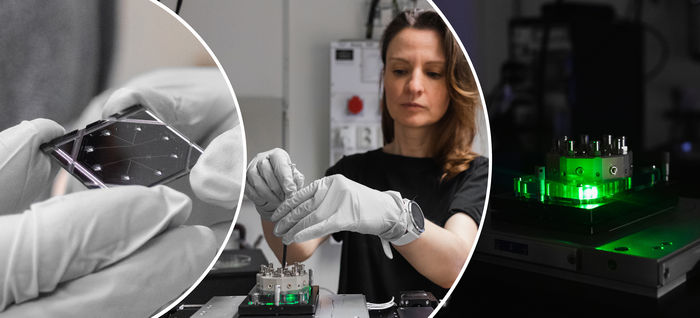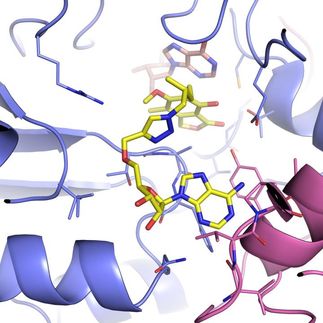Efficacy of tuberculosis vaccine enhanced by VIB scientists
Nele Festjens and Nico Callewaert of VIB and Ghent University have improved the efficacy of the vaccine for tuberculosis. The new vaccine affords - as already proven in mice - better protection against the disease. The development of a new tuberculosis vaccine is a priority in the fight against the disease which claims the lives of 1.7 million people each year. The current vaccine provides only partial protection.
Nico Callewaert: "Our vaccine is more effective because it is more quickly recognized by the immune system of the vaccinated person. We have, as it were, undressed the existing vaccine by removing its protective shield."
Tuberculosis: a worldwide problem
One third of the world population is infected with the Mycobacterium tuberculosis bacterium which causes tuberculosis (TB). TB, AIDS and malaria are the three infectious diseases claiming the largest number of fatalities worldwide. The World Health Organization (WHO) estimates that each year 8 to 10 million people become infected. TB is in particular a disease of the poor and mainly affects young adults in their most productive years. Most TB fatalities are in the developing countries, more than half of them in Asia. In almost all of these countries, multidrug-resistant TB is becoming increasingly frequent. This form of TB is very hard to treat.
Prevention is better than cure
TB treatments are expensive and also very difficult because of multidrug-resistant TB. There has therefore been a strong focus on vaccination in the fight against TB. The only vaccine on the market is Bacillus Calmette-Guérin (BCG). It is produced from attenuated live bovine tuberculosis bacterium, Mycobacterium bovis, which has lost its virulence in humans. In children, the vaccine prevents only half of cases of tuberculosis and in adolescents and adults the degree of protection is much lower still.
In recent years, several other candidate vaccines have been developed and some of these have been tested on humans. Only a few have led to a moderate improvement in protection compared with the BCG vaccine. The search for a more efficient vaccine is therefore still on.
Removing the bacterium's defense shield
The bacterium from which the BCG vaccine is derived hides as it were from the immune system of the organism in which it ends up. This may well be the reason why the vaccine is not very effective. The fact is that a vaccine is meant to trigger an immune reaction in order to be able to afford good protection. Nele Festjens and Nico Callewaert have discovered that the bacterium hides behind the SapM enzyme that acts as a kind of shield.
They have used this knowledge to develop a new vaccine. They adapted Mycobacterium bovis BCG in such a way that it was no longer able to generate SapM and could therefore no longer hide from the immune system. Testing the new vaccine on mice has shown that it affords better protection than the present BCG vaccine.
A different mechanism
The researchers also demonstrated that their vaccine works in a way different from the other vaccines currently being tested. In fact, it acquires its extra protective value by emitting signals that provoke inflammation and in this way activate the right cells of the immune system. Festjens and Callewaert are convinced that applying their strategy - removing the protective shield - in the new vaccines that are somewhat better than the vaccine currently being marketed should lead to a vaccine that affords genuine protection against TB.
Other news from the department science

Get the life science industry in your inbox
By submitting this form you agree that LUMITOS AG will send you the newsletter(s) selected above by email. Your data will not be passed on to third parties. Your data will be stored and processed in accordance with our data protection regulations. LUMITOS may contact you by email for the purpose of advertising or market and opinion surveys. You can revoke your consent at any time without giving reasons to LUMITOS AG, Ernst-Augustin-Str. 2, 12489 Berlin, Germany or by e-mail at revoke@lumitos.com with effect for the future. In addition, each email contains a link to unsubscribe from the corresponding newsletter.
More news from our other portals
Last viewed contents























































